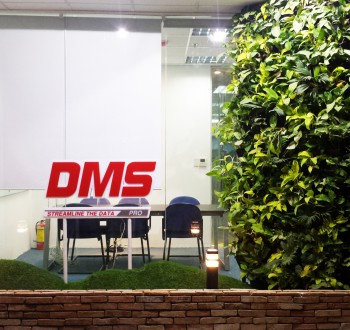- 19-09-2024
- Category: Quản Trị Doanh Nghiệp
Kantar has just released the Brand Footprint Vietnam 2024 report, ranking the most purchased FMCG brands in Vietnam for 2023.
This ranking is part of Kantar’s global Brand Footprint study, now in its 12th year. This year’s study tracks the most popular brands worldwide and in 55 markets, representing 76% of the global population.
About the Brand Footprint Vietnam 2024 Report
Based on household purchasing data from Worldpanel by Kantar, the annual Brand Footprint Vietnam report highlights the most frequently purchased FMCG brands across five main sectors: Food, Beverages, Dairy and Dairy Alternatives, Health & Beauty, and Home Care. Additionally, the report identifies the Top 5 brand owners chosen by consumers in four major cities (Ho Chi Minh City, Hanoi, Da Nang, Can Tho) and rural Vietnam.
The ranking uses Consumer Reach Points (CRP), an exclusive Kantar metric that measures both the penetration rate of households buying the brand and the frequency of purchases, providing a comprehensive view of consumer brand choices.
With the theme “Brand Footprint Vietnam 2024: Decoding Brand Choices in Vietnam,” the report highlights the notable achievements of the most purchased FMCG brands in the dynamic year of 2023.

FMCG Sector Rankings:
1. Top 10 Most Purchased Packaged Food Brands
The ranking confirms the dominance of giants like Hảo Hảo, Chinsu, and Nam Ngư, leading the market in both urban and rural areas, maintaining top positions in the Top 5.
In 2023, Hảo Hảo leads in urban areas and ranks second in rural areas with impressive CRP growth. This brand attracted an additional 187,000 urban households and over 1 million rural households, achieving a household purchase rate of 78.9% and 65.7%, respectively, the highest in the Top 10 food brands.
Chinsu and Nam Ngư from Masan Consumer maintain their positions in the Top 5 in both urban and rural areas. Simply from Wilmar moved up to 7th place in urban areas, surpassing Biên Hòa.
In rural areas, Asiafood’s Gấu Đỏ moved up to 6th place, coming closer to the Top 5.
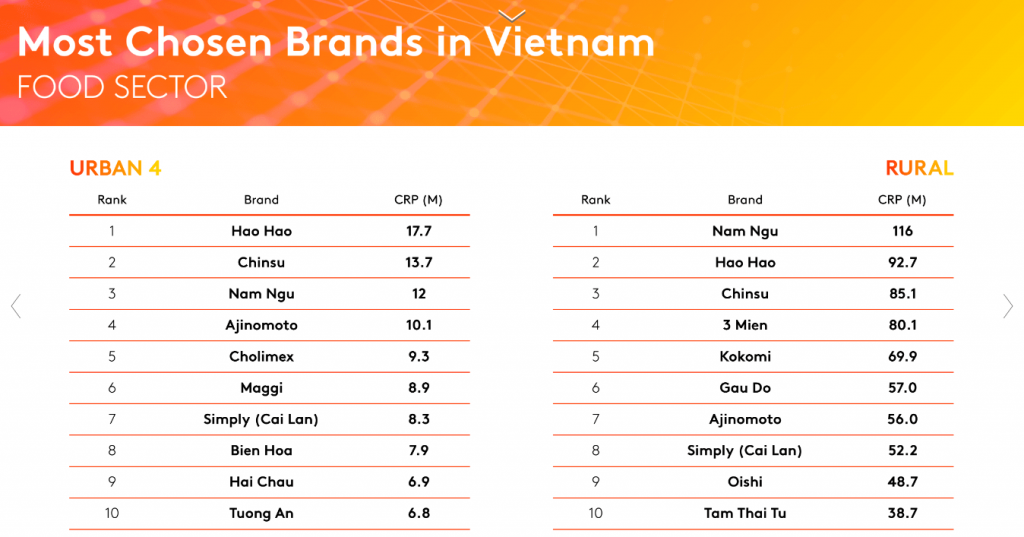
2. Top 10 Most Purchased Beverage Brands
Unlike the food sector, the beverage ranking saw significant changes. Coca-Cola retained the top position in both urban and rural areas with notable new household purchases.
Suntory-PepsiCo‘s Sting rose to 2nd place in urban areas. Aquafina also entered the Top 5 for the first time. Meanwhile, Bia Saigon jumped 9 spots to enter the Top 10 with an impressive 57.5% CRP growth.
In rural areas, Red Bull continued to grow, reaching 4th place with a 12% increase in purchase occasions.
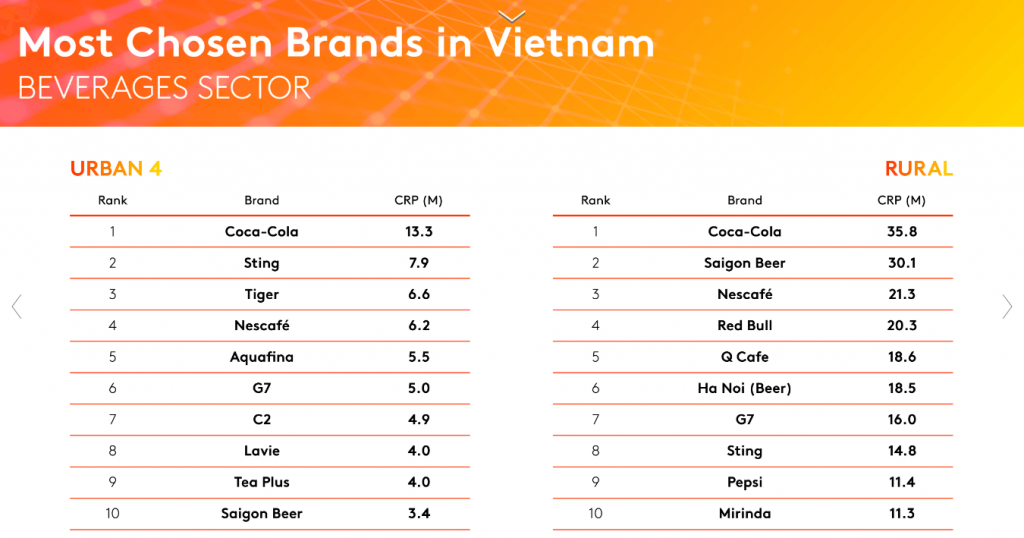
3. Top 10 Most Purchased Dairy and Dairy Alternatives Brands
The urban dairy and dairy alternatives market shows stability among major brands, with 8 of the Top 10 brands maintaining their positions from the previous year.
Vinamilk continues to assert its leading position, being the most chosen dairy brand in both urban and rural areas. Vinamilk’s condensed milk brands Ông Thọ and Ngôi Sao Phương Nam have remained in the Top 5 for four consecutive years, with impressive double-digit CRP growth.
TH holds the 2nd position in urban areas with the highest CRP growth in the Top 5. Meanwhile, Fami soy milk maintains a stable 2nd place in the rural market for several years.
Yakult saw the largest leap in the Top 10 in urban areas, moving up 2 spots. Vinamilk’s Probi yogurt also made a notable advance, entering the Top 10 for the first time. Both yogurt brands recorded a 20% increase in purchase frequency.
Lif/Lif-KUN moved up to 6th place in the rural market, coming closer to the Top 5. Nutifood’s Grow Plus+ made a significant jump from 15th to 10th place in rural areas, with an impressive 32% CRP growth. Both Lif/Lif-KUN and Grow Plus+ saw high CRP growth in the Top 10.
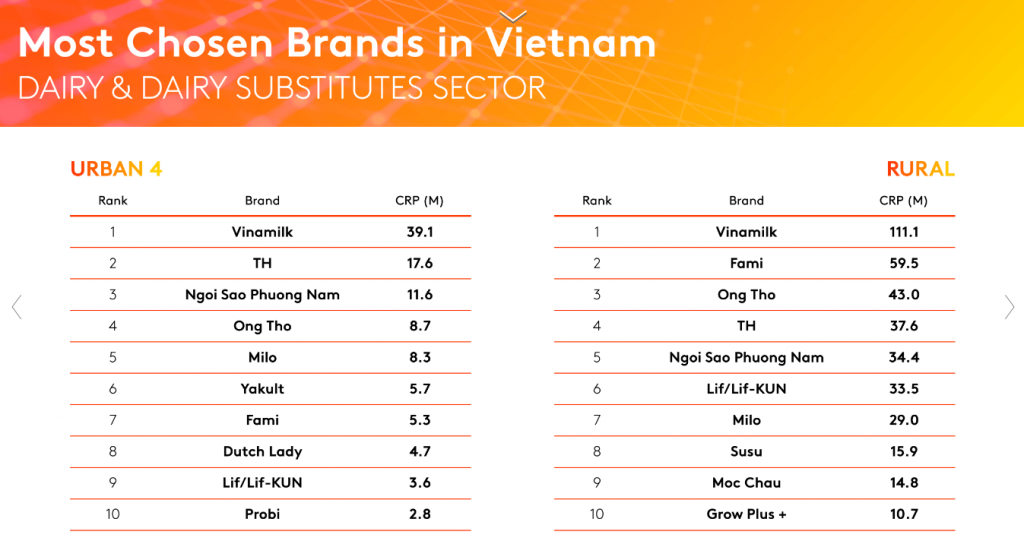
4. Top 10 Most Purchased Health and Beauty Brands
Unilever continues to lead the ranking of the most chosen health and beauty brands, with 6 brands in the Top 10 including P/S, Lifebuoy, Sunsilk, Clear, Close-up, and Dove.
Japan’s Diana feminine hygiene brand topped the health and beauty sector in urban areas, while P/S toothpaste led in rural areas.
Kotex rose to 5th place, replacing Sunsilk to enter the Top 5 in urban areas, with a CRP growth of 4.4%.
Close-up and Dove also achieved notable results, moving up 1 and 2 spots respectively in the urban ranking, with the highest CRP growth in the Top 10. Dove also led in overall CRP growth in the Top 10. Additionally, Close-up was the only personal care brand to improve its position and CRP growth in the Top 10 health and beauty sector in rural areas.
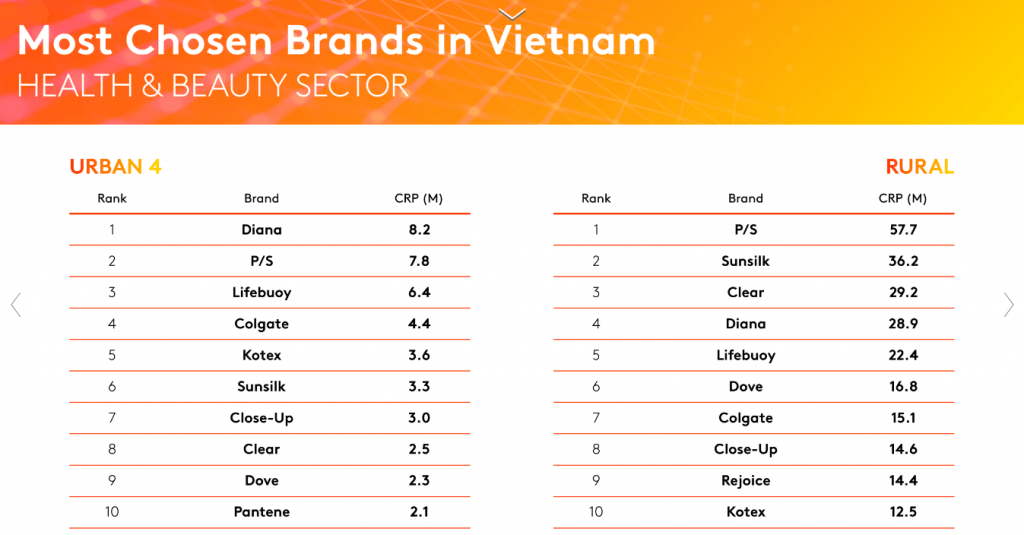
5. Top 10 Most Purchased Home Care Brands
The home care sector saw significant growth in 2023, with 8 of the Top 10 brands showing CRP growth.
The Top 3 home care brands in both urban and rural areas remain unchanged, led by Unilever’s three brands: Sunlight, OMO, and Comfort.
In urban areas of the 4 main cities, Vim and Lix detergent brands recorded double-digit growth, each rising 1 spot from the previous year, securing 5th and 7th positions.
In rural areas, the savings segment saw strong growth, with Net and Surf achieving double-digit growth and increased purchase frequency. Surf made a notable jump, rising 2 spots to enter the Top 10.
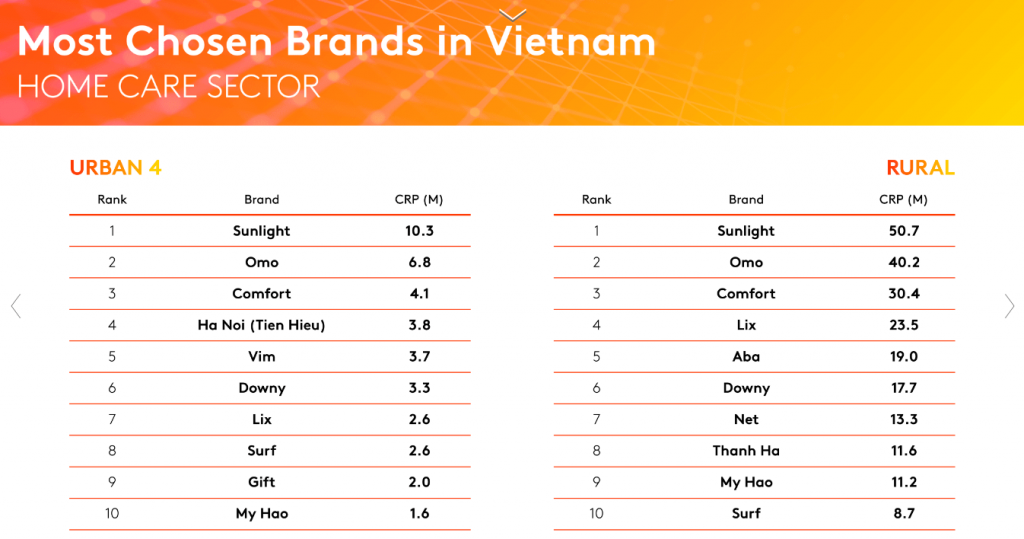
6. Top 5 Most Purchased Brand Owners
The Top 5 FMCG brand owners in both urban and rural Vietnam have maintained their positions from 2023. Vinamilk, Unilever, and Masan are present in both rankings, dominating the FMCG market.
Vinamilk and Masan continue to lead as the most chosen brand owners in both urban and rural areas, with a presence of many familiar brands in dairy and food sectors. Unilever maintains a strong position in home and personal care, ranking second in both urban and rural areas.
Nestlé, the global nutrition group, retained the 4th position in urban areas, thanks to an additional one million purchases. Meanwhile, Wilmar, Asia’s leading cooking oil producer, strengthened its 4th position in rural areas with a significant increase of 17 million purchases.
Suntory-PepsiCo Vietnam Beverages held its position and purchase numbers steady in the urban market. In rural areas, Acecook Vietnam added 20 million purchases due to the success of the Hảo Hảo noodle brand.
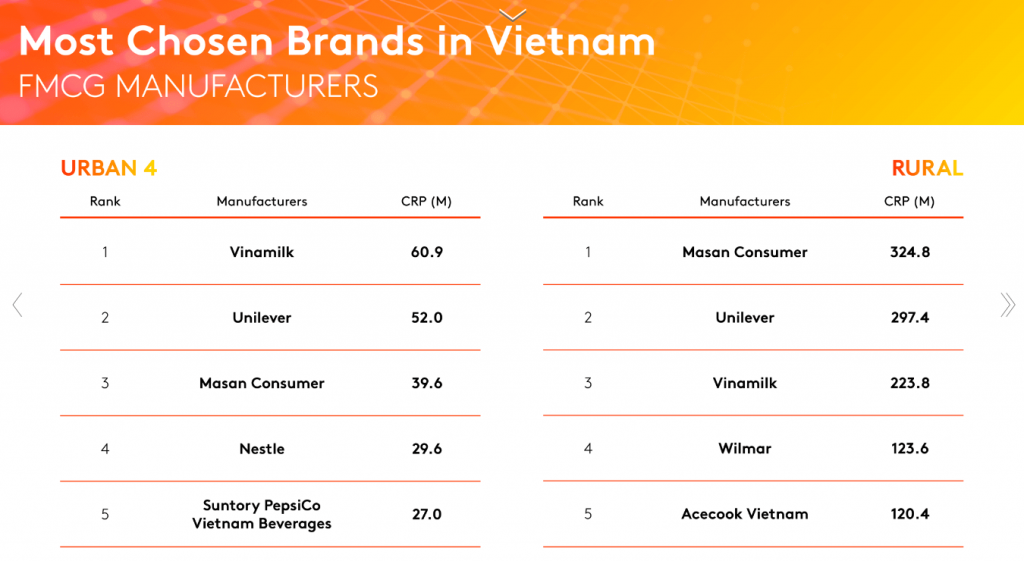
In the competitive landscape of Vietnam’s FMCG market, continuous innovation and adaptation are key to success. Consumers are becoming more savvy and demanding more from products and brands, so businesses need to consistently enhance customer experiences and be present at every touchpoint. By mastering the art of adaptation and seizing opportunities, companies can overcome challenges and become market leaders.
You can view the full Vietnam Brand Footprint 2024 report here and follow the Top 50 FMCG brands and Top 20 in each sector here.
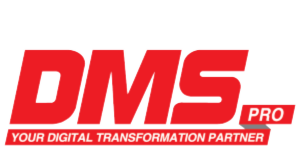 Your Distribution Management Solutions
Your Distribution Management Solutions

